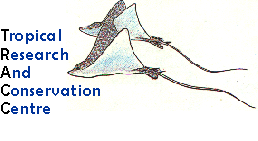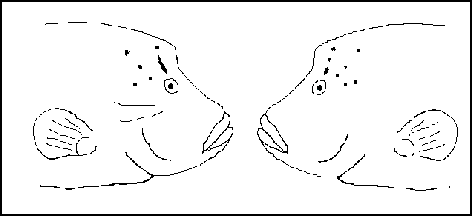|
|
|
|
Natural identification of humphead wrasse
|
 |
|
|
|
|
The use of natural markings for individual identification is not new and has been successfully applied in the study of a number of aquatic animals. Pet goldfish and Japanese Koi are bred, valued and sold on basis of colour and markings. Marine mammals such as killer whales (Similae & Lindblom 1993), humpback whales (Katona & Whitehead 1981) monk seals (Soriguer 1984) and grey seal (Hiby & Lovell 1990) are regularly identified by photographs taken when the fins or animal is out of the water. Brown trout photo identification when the fish were out of water was attempted by Glova (1988). Less formal identification is more common, with many divers able to identify regularly seen, large or remarkable, individual fish such as Potato cod, moray eels, wolf eels etc. It is however not always the fish which are recognised but a more general combination of location, behaviour and species. In most cases, divers would not recognise an individual fish if it was displaced from its home range or mixed with other fish of the same species. |
|
Humphead wrasse can be identified individually from size, scars and the dot and line pattern on the hump.
Our study aimed to use the presence of natural markings for individual identification with the purpose of observing, recording and describing ecological and reproductive behaviour of humphead wrasse.
On Pulau Layang Layang, we identified 75 fish that can be individually recognised from a population of 340-375 fish. All the breeding males at the spawning aggregation site are individually known.
IDENTIFICATION MARKS AND SCARS CAN BE SEEN ON THIS FISH. |
|
CONTACT US FOR MORE INFORMATION OR A COPY OF THE PUBLICATION.
Identification criteria used:
|
Eyelines: More pronounced in juveniles, not much variation between individuals but if used in conjunction with head spots they are useful identification marks. |
|||||||||||||||||||||
|
Primary spots: The big black spots which curve upwards from the eye and seem to be present in most individuals, with slight variation. |
|||||||||||||||||||||
|
Secondary spots: These are the much smaller and finer looking black spots, more numerous and show more variation between individuals; when used in conjunction with primaries and eye stripes they provide a detailed picture of individuals. |
|||||||||||||||||||||
|
Body scars: Many individuals possess small body scars on their lips and bodies -- these look white underwater due to scar tissue. Probably not permanent and cannot be relied upon for individual identification but in conjunction with secondaries and primaries they aid identification over short observation studies. Scale scars are longer term marks and certainly last several years. |
|||||||||||||||||||||
|
Fin tears: Fin tears are also sometimes present and aid identification of individuals, but like body scars they may not be permanent and can therefore only be relied upon with other natural markings. |
|||||||||||||||||||||
|
Colour: Colour change develops with age -- from silver-grey with yellow spots and edge of caudal fin in juveniles, to a deep olive green with black spots and whitish edge of caudal fin in adults. Colour may possibly aid estimation of age along with body size or sexual stage. |
|||||||||||||||||||||
|
Size:
Size estimation utilising arm length enabled quick standard
measurement for both observers in this study, who were of the same size.
(Observers who are of smaller / shorter build need to adjust the
categories against arm lengths.)
|
 |
ONE OF THE FISH IDENTIFIED ON PULAU LAYANG LAYANG.
Humphead No. 37; green colour, small hump, 85-90 cm long. Note the markings on the hump, which are different for each individual fish.
|
|
The spot markings are asymetrical, so for accurate identification it was necessary to observe both left and right sides of the fish. |
|HUMPHEAD WRASSE IN SABAH| |HUMPHEAD WRASSE AND THE LIVE FISH TRADE| |POPULATIONS AND SIZES| |NATURAL IDENTIFICATION|

![]()